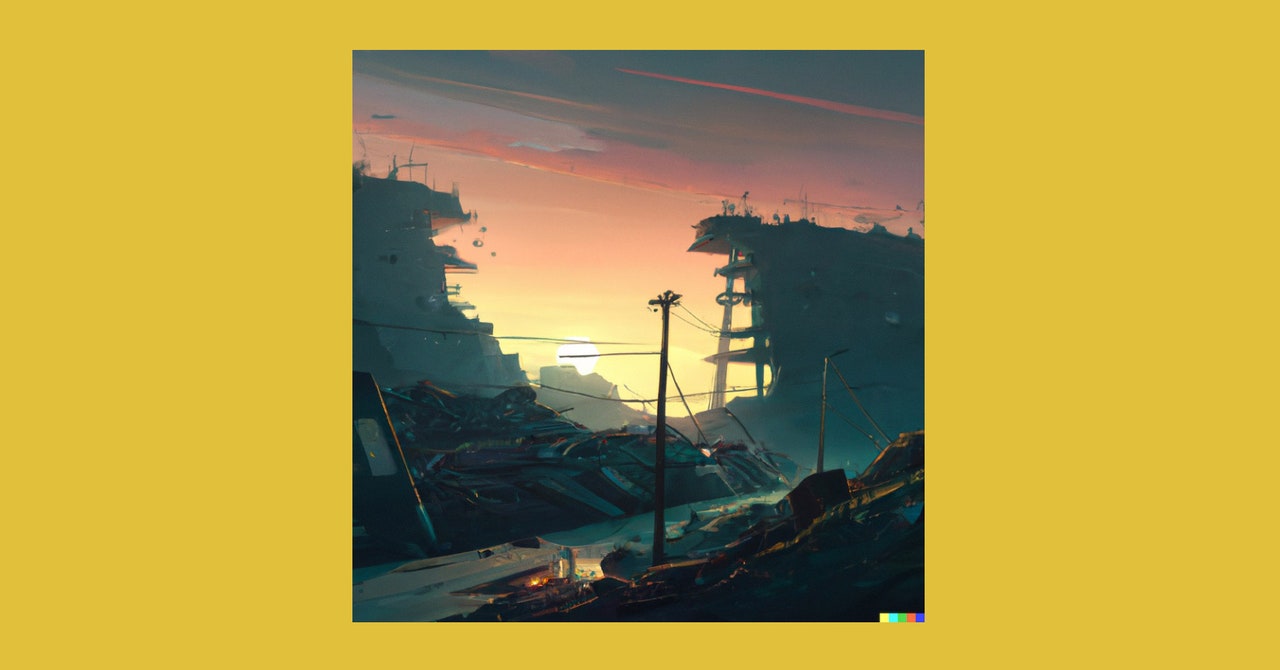[ad_1]
Swedish artist Simon Stålenhag is thought for haunting work that mix pure landscapes with the eerie futurism of large robots, mysterious industrial machines, and alien creatures. Earlier this week, Stålenhag appeared to expertise some dystopian dread of his personal when he discovered that synthetic intelligence had been used to imitate his type.
The act of AI imitation was carried out by Andres Guadamuz, a reader in mental property legislation on the College of Sussex within the UK who has been finding out authorized points round AI-generated artwork. He used a service referred to as Midjourney to create photos resembling Stålenhag’s spooky type, and posted them to Twitter.
Guadamuz says he created the photographs to focus on the authorized and moral questions that algorithms that generate artwork might increase. Midjourney is only one of many AI packages able to churning out artwork on demand in response to a textual content immediate, utilizing machine studying algorithms which have digested tens of millions of labeled photos from the net or public knowledge units. After that coaching, they will conjure up nearly any mixture of objects and scenes and may reproduce the kinds of particular person artists with uncanny accuracy.
Guadamuz says he selected Stålenhag for his experiment as a result of the artist has criticized AI-generated artwork previously and may be anticipated to object. In a weblog submit after the incident, Guadamuz argues that lawsuits claiming infringement are unlikely to succeed, as a result of whereas a chunk of artwork could also be protected by copyright, an inventive type can not.
Stålenhag didn’t approve of the stunt. In a series of tweets this week, he stated that whereas borrowing from different artists is a “cornerstone of a residing, creative tradition,” he dislikes AI artwork as a result of “it reveals that that form of spinoff, generated goo is what our new tech lords are hoping to feed us of their imaginative and prescient of the longer term.”
Stålenhag didn’t reply to requests for remark. Guadamuz publicly apologized to Stålenhag and says he deleted tweets that included the spinoff photos. Guadamuz additionally says he obtained offended messages, together with a dying menace, from some Twitter customers who disapproved of his stunt. He says that what began out as a thought-provoking experiment was misinterpreted as an assault. “I am bored and mild-mannered tutorial by day, however by night time I grow to be a supervillain destroying artists’ livelihoods … or one thing,” Guadamuz jokes.
Algorithms have been used to generate artwork for many years, however a brand new period of AI artwork started in January 2021, when AI growth firm OpenAI introduced DALL-E, a program that used latest enhancements in machine studying to generate easy photos from a string of textual content.
In April this 12 months, the corporate introduced DALL-E 2, which might generate pictures, illustrations, and work that appear to be they had been produced by human artists. This July OpenAI introduced that DALL-E could be made accessible to anybody to make use of and stated that photos may very well be used for business functions.
OpenAI restricts what customers can do with the service, utilizing key phrase filters and instruments able to recognizing sure varieties of photos that may be thought of offensive. Others have constructed related instruments—reminiscent of Midjourney, utilized by Guadamuz to imitate Stålenhag—which might differ of their guidelines about applicable use.
